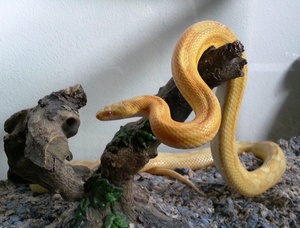Our society seems to crave the strange, new or uncommon in many features of our lives. Pets are no exception to this segment of our culture. A couple of weekends ago I examined and treated two African hedgehogs (Atelerix frontalis). One that was urinating blood and the other with a prolapsed rectum. I successfully treated both and they are both thriving. I do enjoy working with exotic animals and was grateful that the clients chose our clinic to seek care for their pets.
The experience did also give me cause to think more about this element of my practice. Merriam Webster online dictionary defines exotic as “introduced from another country: not native to the place where found” or “strikingly, excitingly, or mysteriously different or unusual”.
The two African hedgehogs certainly fit into the first Merriam Webster definition, as their area of origin is central Africa. For North America many other species commonly kept as pets fit very well into this definition. Examples are the several varieties of parrots, budgerigars, and cockatiels that grace many homes. Ornamental fish such as fresh water aquaria, salt water aquaria, and Koi are other very popular examples. Small mammals such as hamsters, gerbils and guinea pigs also fit into this category. This is by no means and exhaustive list but give you an idea as to some common exotic animal species kept as pets.
Many other animals held as pets nevertheless are defined as exotic even though they are native to a country or area where they are kept. These animals therefore fit more comfortably into the second Merriam Webster definition. Examples include the Butter Motley corn snake that resides with our family. While her wild cousins naturally live in the south eastern United States she is not native to our area. Even if you live in Florida, which is part of her native range, she is still considered an exotic pet.
Keeping exotic pets is a custom that is centuries old and Koi fish may be the best example. Somewhere between 960-1279 the Sung Dynasty began breeding carp for aesthetics1. As early of the 1600’s these fish made their way to Europe and the United States by the late 1800 or early 1900’s1.
I obviously have am not opposed to the keeping and breeding of exotic pets, as I myself own one, and I eagerly treat exotic animals. There are situations however, in which I believe it is unethical, dangerous and even inhumane to keep exotic animals as pets. The tragic situation with exotic animal owner Terry Thompson in Zanesville Ohio is a prime example. Large, dangerous carnivores do not make good pets. They can never be trusted and as I have said previously it is very difficult to create and maintain an enclosure that is both safe and humane for these animals.
Another reason that you may question the ethics of exotic animals is that some of these animals are illegally captured for the pet trade. Many illegally collected animals are species which are threatened and endangered and they are often mistreated and housed in substandard quarters with inadequate food and water. Consequently there are also no veterinary or customs inspections to screen for foreign animal diseases. Smuggling them across international borders, could thus very easily result in widespread disease pandemics.
Before selecting an exotic animal as a pet take a few moments to think things through. Make sure that your new pet is captive bred and that it will not pose a danger to those around you. Consult your family veterinarian before you make your purchase. He or she can advise on which species is right for you and your family.
1. Manual of Exotic Animal Practice; Mark Mitchell DVM MS PhD, Thomas N. Tully DVM, MS, Dip. AVBP (Avian), ECAMS page 1



